Chapter 1
YOUR GUIDE TO FACILITIES MANAGEMENT DURING THE PANDEMIC
A GREEN FACILITIES PUBLICATION
Introduction
What is COVID-19?
How can Green Facilities Help Maintain a Safe Work Environment?
GFM’s Technological Cleaning Solutions to COVID-19
GFM Eco-Friendly Cleaning Solutions
Conclusion
COVID-19 Facilities Management Checklist
Chapter 1
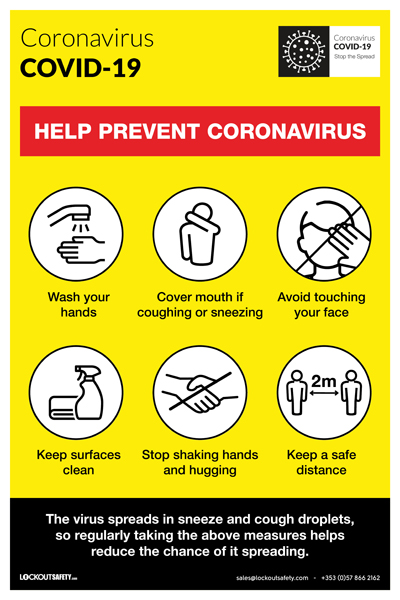 For UK businesses navigating the current landscape and government guidelines, future sustainability is very much dependant on being flexible to the
For UK businesses navigating the current landscape and government guidelines, future sustainability is very much dependant on being flexible to the
latest measures and new ways of working.
One indispensable element of this adaptability is workplace health and safety. In this guide, we will address the duties and responsibilities of businesses to keep their employees and customers safe from COVID-19. We’ll explore the strategies that need to be put in place to protect people returning to the workplace and sharing common facilities.
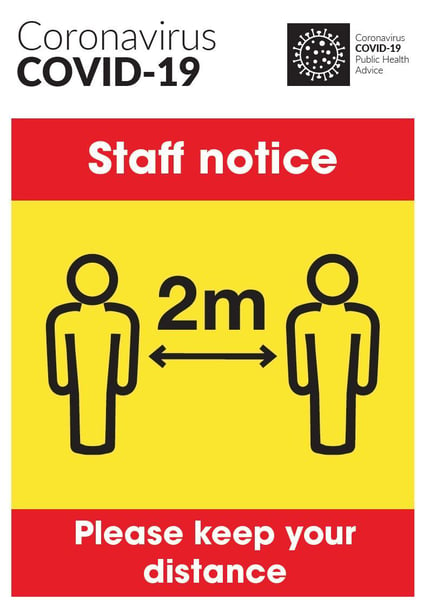
We’ll also lay out the various innovative, cost-effective, and environmentally friendly solutions from Green Facilities to help fight the damaging effects of the
pandemic.
Your business is only as good as the people you employ, so defending your
the workforce from infection and illness should be the number one priority in these
uncertain times.
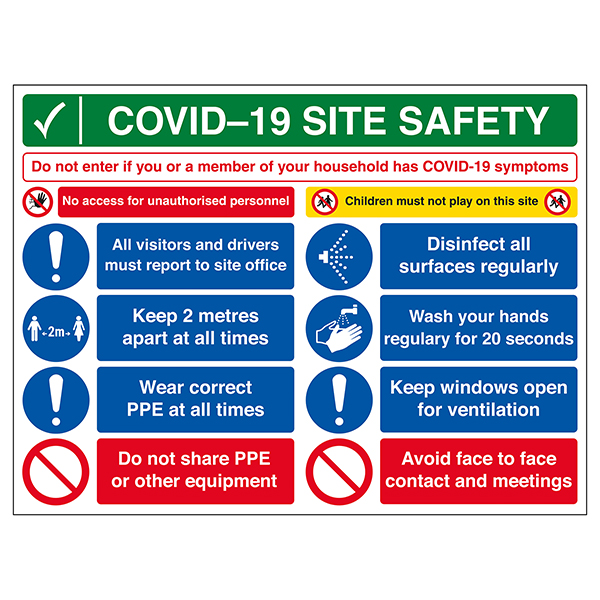
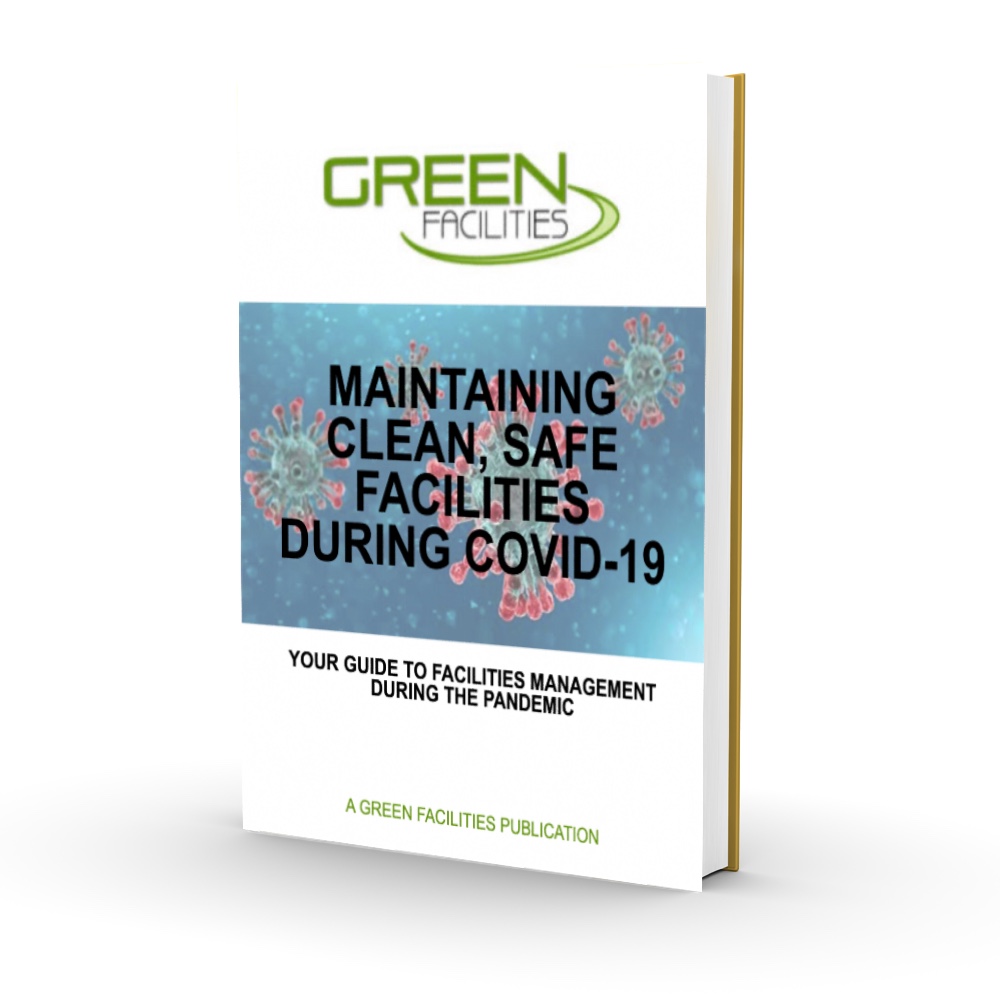
Simply fill out this form to receive a PDF version of our guide.
Chapter 2
Thought to have originated in Wuhan, China, possibly in livestock, the virus is a new strain of the coronavirus family that jumped from animals to humans.
Many people have died from COVID-19 (the disease caused by the coronavirus), mostly those with pre-existing conditions such as respiratory problems, cancer, diabetes, and obesity. While a significant proportion of cases produce no symptoms or very mild ones, a great many require hospitalisation and intensive care, including ventilation.
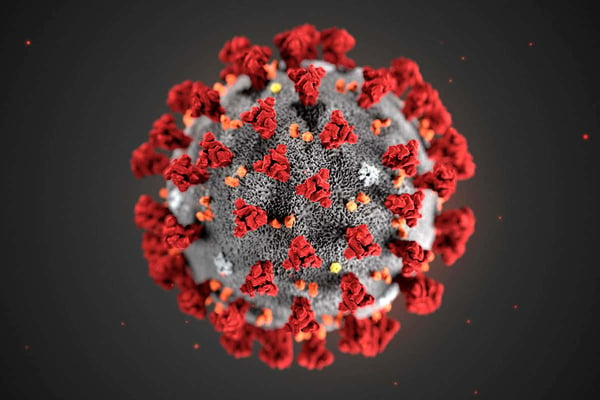
Most importantly, the virus spreads by contact and through airborne
moisture particles that infected people emit when they breathe and speak.
Therefore, to reduce the rate of infections the most effective solutions involve limiting contact between people or, where that is impossible, reducing the risk of contamination.
Measures to slow the spread of COVID-19 have had unprecedented effects on global business and economies. Therefore, the pandemic is an emergency that needs urgently addressing for more than just health reasons.
THE UK GOVERNMENT’S RESPONSE
In the United Kingdom the measures to deal with coronavirus are changing all the time in response to the level of threat. Generally speaking, after a lengthy nationwide lockdown things are gradually (though cautiously) opening up. However, there are still vulnerable people shielding and areas tightening restrictions again as smaller outbreaks occur, and the threat of a second wave of infections is ever-present.
The latest government guidelines [correct as of 3 August] include the following:
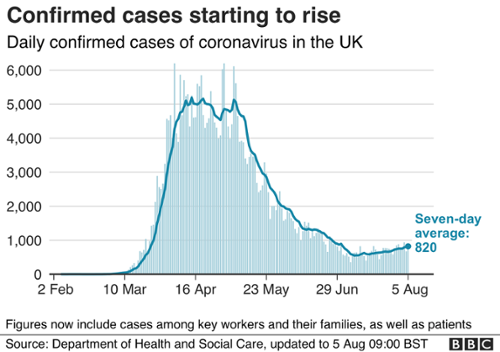
For businesses, the government’s furlough scheme has so far helped limit the risk of many people gathered together in an office space or similar. Companies who have seen a reduction in demand for their services have thus been able to protect many jobs that otherwise would have been lost. These furloughed workers join those working from home to prevent workplace infections and keep businesses out of the worst financial trouble.
The government points out that employers have a legal responsibility to protect their employees and people on their premises. Safety measures vary significantly depending on the type of business and staffing structure of each company. Guidelines for different types of business can be found on the gov.uk website, but there are five steps that all businesses must take:
Many businesses have co-ordinated with government actions to enable responsive measures to occur. These include:
However, preventative measures are the most effective and beneficial when it comes to keeping everyone safe and protecting the NHS from a perilous rise in cases nationwide. Such steps include:
Cleaning
For both responsive and preventative actions, the most important thing is maintaining a hygienic environment. Damage to the economy is almost an equal danger to the pandemic itself, and some businesses simply have to open and operate in some way if they are going to survive. For many, working remotely or furloughing staff is not an option.
Pubs, restaurants, gyms, hotels, schools and shops are just some of the businesses that need to open their doors in physical premises, with staff present in person. In these instances, where all five of the government’s steps need to be activated, identifying the best solutions for a clean,
sanitary work environment should be a top priority.
Chapter 3
Green Facilities have years of experience cleaning work spaces quickly and efficiently with minimal disruption to staff and workflow. Cleaning teams are trained to tackle any kind of environment, from leisure and hospitality to healthcare industries, and more conventional office spaces in legal, charity, media, and financial sectors.
Best cleaning practice would be to use the services of a trusted cleaning team every day, so that staff are entering a hygienic space every time they come in to work. However, this isn’t practical or feasible for all businesses.
It’s therefore crucial to carefully assess the level of cleaning required at the workplace, and identify the most important areas to focus on, in order to produce a safe environment.
This may involve increasing the time of each scheduled visit so cleaners can perform the extra tasks necessary to ensure areas are COVID-secure. For example, a normal hour-long booking might increase to an hour and a half.
Alternatively, special attention must be given to infection-spreading hot spots. Surfaces and objects that are most often touched need the most time and thoroughness.
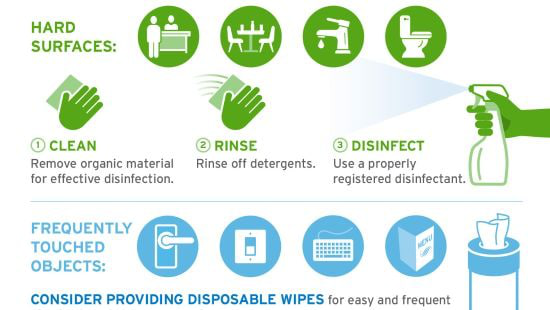
Green Facilities are trained to target:
Allowing extra time in a cleaning company’s scheduled callout, and making sure they concentrate on high frequency surfaces can make all the difference between “clean” and “COVID-secure”.
It’s highly recommended to make a detailed assessment and put in place sufficient provisions in the cleaning rota to give this peace of mind to you and your employees.
Chapter 4
Once you’ve made your assessment and ensured the Green Facilities cleaning team has been given the time and access to your business’s work areas, they have a specialised range of technologies at their disposal to guarantee hygiene and safety. This range of equipment can help you save time and money in your cleaning efforts in a number of ways.
Others are tools in the Green Facilities’ arsenal that our staff are specially trained to use to ensure effective cleaning. The following products are a rundown of our most popular and impactful cleaning technologies at your disposal.
One of the most obvious places where cross contamination from one person to another can occur in the workplace is doors. Whether it’s staff entering and exiting through the same routes or customers coming into your shop or restaurant, they all have to make physical contact with a handle or door surface to pull or push it open.
Studies have shown that the coronavirus can survive on some surfaces and remain infectious for up to 9 days. All it takes is for a COVID-positive individual to touch the door, followed by someone else who then touches their face. Then the virus has been transmitted.
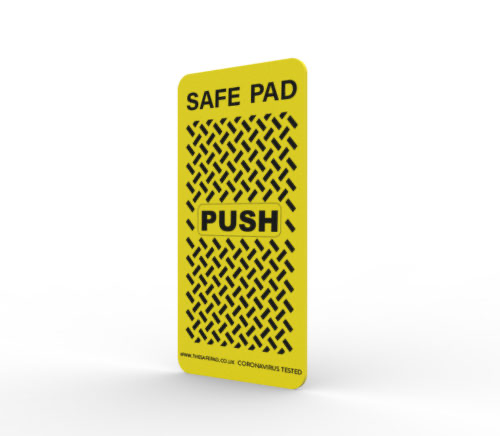
The Safe Pad is a self-adhesive covering available in a variety of sizes that has been shown to be resistant to feline coronavirus. While it’s not yet possible to test against COVID-19, this close comparison is a highly reliable indicator of defence against the family of coronaviruses.
The antibacterial coating contains silver ions, which are well known microbe-killing compounds, meaning nobody will pick up any live viruses deposited by an infected person.
Fixing a Safe Pad to the push plates of office doors can greatly reduce the infection rate from this all-too-common source of viral transmission. This is a cheap and simple option and its high visibility also gives germ-conscious staff and visitors’ peace of mind.
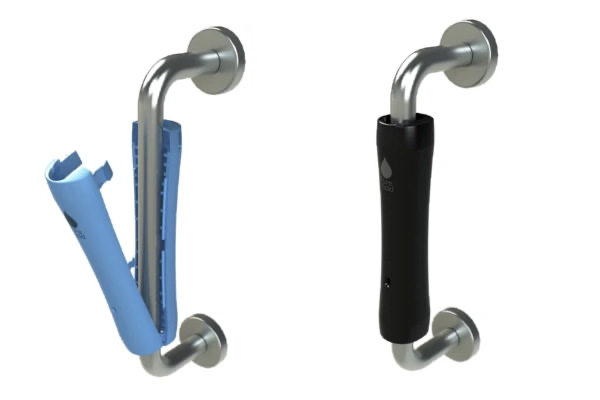
Green Facilities also stock and install silver-technology in the form of Purehold door handle covers. Used as antiviral pads for push-doors or on lever handles, these cost-effective, toxin-free items can ensure that entering or leaving a premises is always safe.
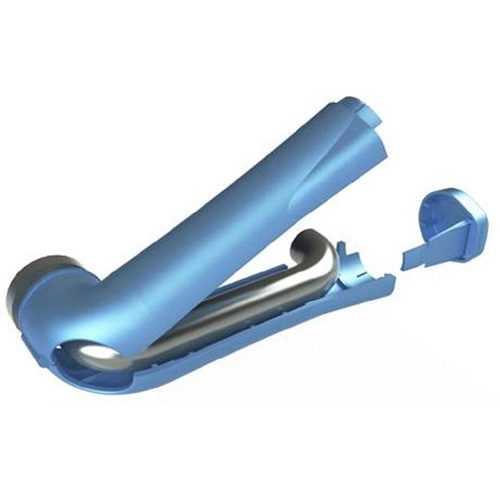
Purehold covers come in a range of fittings to suit the type of door handles in your workplace:
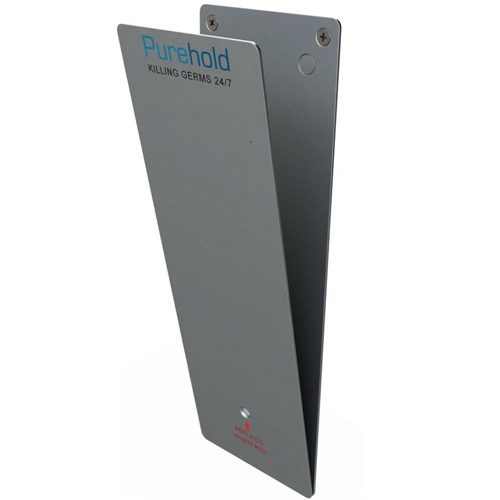
Purehold fixings don’t replace the need for manual cleaning, but they are far more effective than leaving doors unprotected between cleaning team visits.
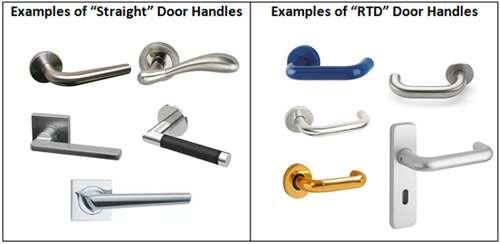
Keeping surfaces free from harmful microbes is paramount when it comes to preventing coronavirus transmission.
The risk when cleaning surfaces is that it is hard to see when areas have been missed. Normal disinfectants are generally okay at killing most microbes. However an everyday spray nozzle and cloth wipe-down can be surprisingly ineffective at achieving total coverage. The last thing you want to do when trying to eradicate a dangerous virus is miss a spot.
Green Facilities therefore have two powerful technologies, used in combination, to reduce the chances of lingering germs to virtually zero.
The first is a water-based anti-microbial additive from Nordic Chem. This non-toxic substance can be sprayed on any target area and it will coat the surface with a microscopic layer of “nanospikes”.
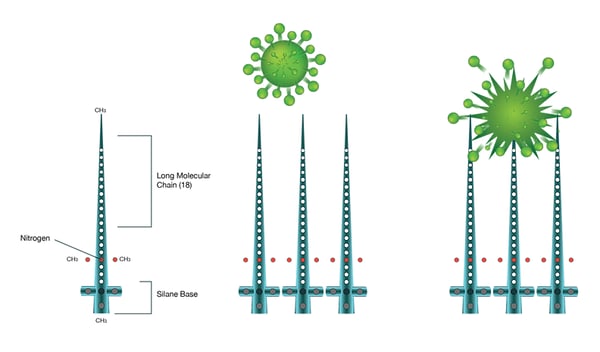
These structures bond to any surface and penetrate the outer membrane of viruses or bacteria that comes into contact with them – killing them instantly.
Using revolutionary quaternary ammonium silicone compounds (“SiQAC”), this amazing solution forms a mechanical rather than chemical barrier to pathogens. After application this coating can inhibit micro-organism growth for up to 90 days, so it’s not only more environmentally friendly than a disinfectant, but longer lasting.
Secondly, to maximise the reach and coverage of the Nordic Chem solution, we can employ the world’s most effective cleaning dispenser: the EMist Electrostatic Sprayer.
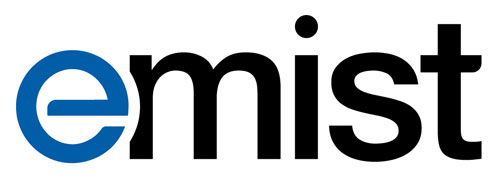
The EMist ensures that more surface area is covered by any disinfectant by positively charging the particles that come out of the unit. The positive mist is attracted to negatively charged surfaces and microbes. So rather than just falling where gravity dictates, the disinfectant actually moves towards the surfaces.

You can imagine then, that applying Nordic Chem with an EMist sprayer provides a much more comprehensive, protective clean than someone using a normal spray and a cloth could ever do.
It’s not possible to consistently clean every nook and cranny of a workplace manually throughout the day. In the heightened environment of a viral pandemic, the ideal solution would be able to provide round-the-clock sterilisation.
This would work best on both surfaces that may have been touched by an infected person and also the environment where airborne particles containing coronavirus may be floating.

That is exactly what Green Facilities delivers with the Hygenikx+ steriliser. This wall-mounted device uses germicidal oxidation, irradiation and dual waveband plasma quatro technologies to provide a range of hygienic benefits:
The Hygenikx+ system provides continuous protection against airborne infections and is recommended for installation in wash rooms, food storage and preparation areas and more.
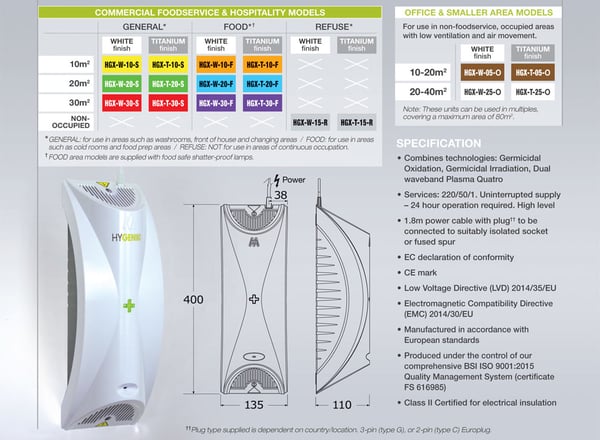
An even more direct and powerful method to cleanse an area is using powerful ultraviolet light. This is similar to the UV rays the sun emits, radiation with a smaller wavelength than visible light.
UV lamps from Goldensea use the optimum ultraviolet wavelength for disinfection of air and surfaces. The UVC radiation destroys the molecular structure of the DNA or RNA of microorganisms, killing the cells of bacteria, moulds and viruses.

Furthermore, Goldensea lamps have been proven to kill the coronavirus in a matter of seconds, making them an extremely efficient disinfectant.
Lamps are available in different sizes and power levels, depending on the size of the area they are to be used on. They include several safety features to prevent harm to humans and animals and need to be set up for just short periods to show results in schools, factories, hotels, clinics and other office spaces.
Chapter 5
We believe that you can live and work in safe spaces free of contamination and risk of infection without having a detrimental impact on our surroundings and the natural world.
That’s why we are committed to working practices that reduce carbon footprints, encourage waste recycling and refrain from using substances that are hazardous to the environment.
Here are some of the ways that we will uphold your own green standards, even while performing a deep-level anti-COVID cleaning service:
This is a recognised standard that ensures that environmental impact is constantly measured and improved. Green FM is very proud that we use 100% environment friendly chemicals that have no detrimental effect on the planet – they are eco-Safe. We also ensure that all our machinery is energy efficient and microfibre technology is used on all our accounts.
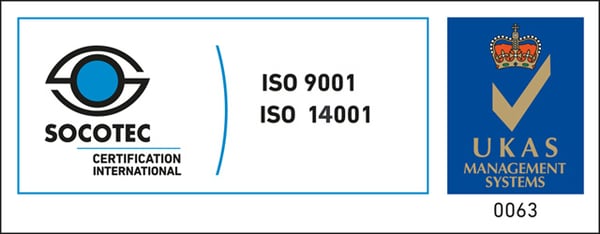
The Control of Substances Hazardous to Health (COSHH) Regulations require proper usage when it comes to dealing with cleaning products and other chemicals. All of our team know how to handle these issues safely.
We are experienced in setting up recycling systems for any workplace, including providing recycling bins. Solutions can be tailored to any situation and we can even train your staff to recycle office waste and make your company greener.
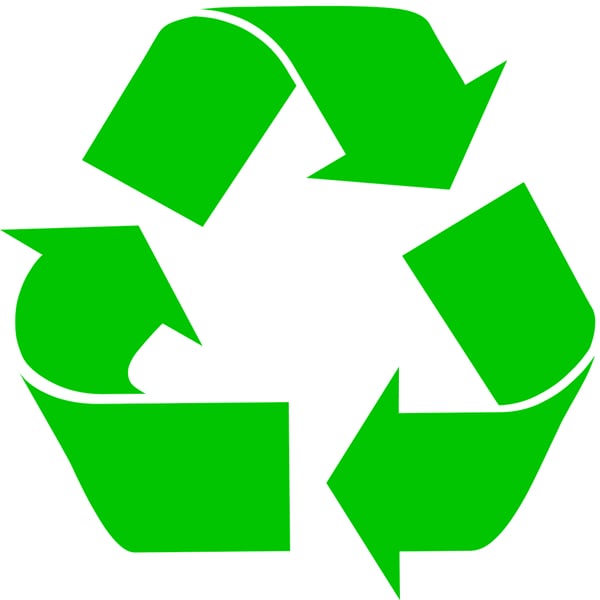
We also have memberships or certifications from the following organisations:
The British Institute of Cleaning Science, the largest independent, professional and educational body in the cleaning industry. Green FM is an active member, achieving the CIMS (Cleaning Industries Management System) certification through BICSc.
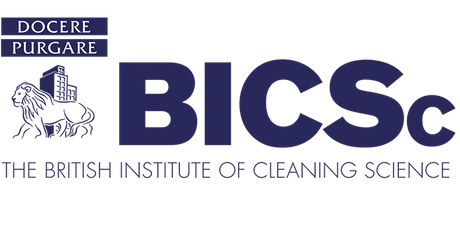
The Institute of Workplace and Facilities Management, who define professional standards for skills, knowledge and competence in facilities management. We are a corporate member and benefit from a suite of qualifications and training to support us in performing to the best of our ability.
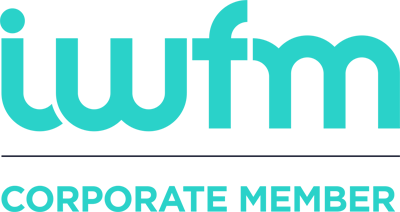
The International Sanitary Supply Association, a network of manufacturers, distributors and service providers in the worldwide cleaning industry. ISSA conducted and delivered the CIMS certification for Green FM.
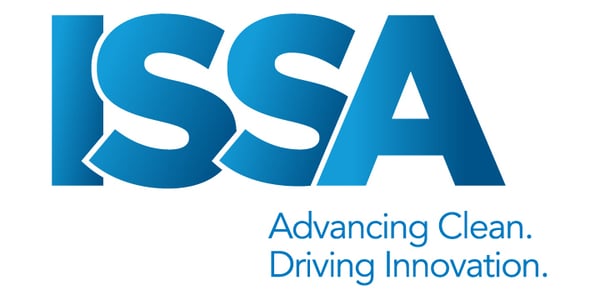
As an ISO 9001 accredited Quality Company all completed work is checked for quality and compliance with the specification and all non-conformities are recorded, analysed and rectified.

We are committed and accredited by the Living Wage Foundation to pay the independently calculated hourly wage that reflects the real cost of living. All Green FM full-time employees are paid above the higher London Living Wage rate.
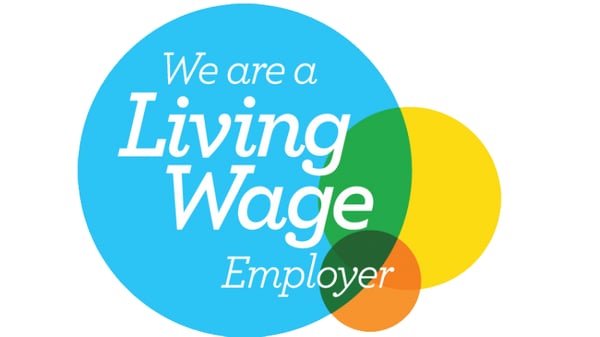
Responsible companies want to do business with other responsible companies and individuals. That’s why it is important to us to provide a green, environmentally accountable service when approaching cleaning and hygiene standards.
What’s more, we believe that this is also the best way to achieve the safest, most sanitary results. It’s no use to have a clean office space if the chemicals used to service that area are damaging the air, water and ecosystem of the world outside the office.
It’s also clear that the green methods we employ are highly effective, as demonstrated by the products we outline in the earlier pages of this guide. The technology and methods we use simply work really well, and they do so with minimal energy consumption and waste. This means that our clients experience cleaner workplaces for less time, effort and fewer unwanted by-products.
Chapter 6
Coronavirus has proven to be an enormous disruption to worldwide business, and it’s possible that we have only seen the beginning of its effects. In all likelihood it will continue to be a significant threat to the health of individuals and businesses for some time yet.
We therefore need to find methods of working that balance economic sustainability with proper protection from the human consequences of COVID-19. At least until an effective vaccine is produced, measures like social distancing and face coverings will continue to be the norm.
But as the UK government encourages workers to return to offices, and restaurants, pubs and cinemas to reopen, the need for comprehensive sanitation is only going to grow.
In order to feel safe to go out to eat, work in a shared office, and use public services for the foreseeable future, we are all going to have to get used to health guidelines and make special provisions for keeping spaces clean from the coronavirus.
Chapter 7
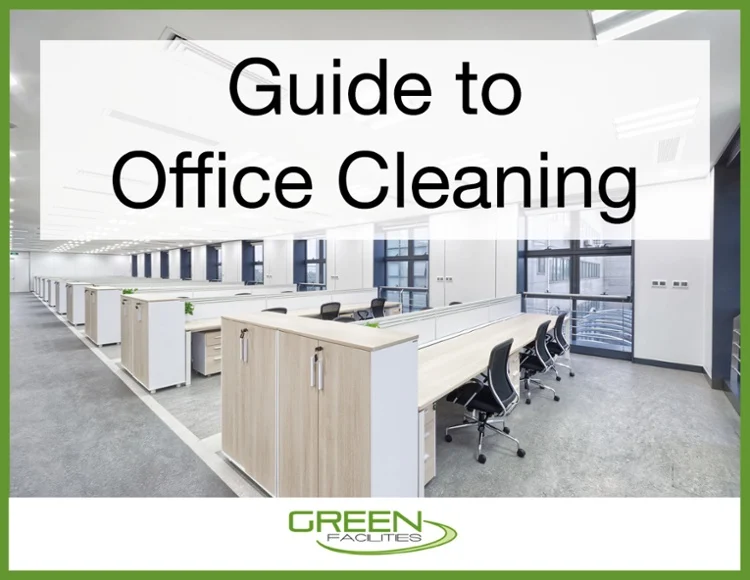
Simply fill out this form to receive this guide as a PDF.